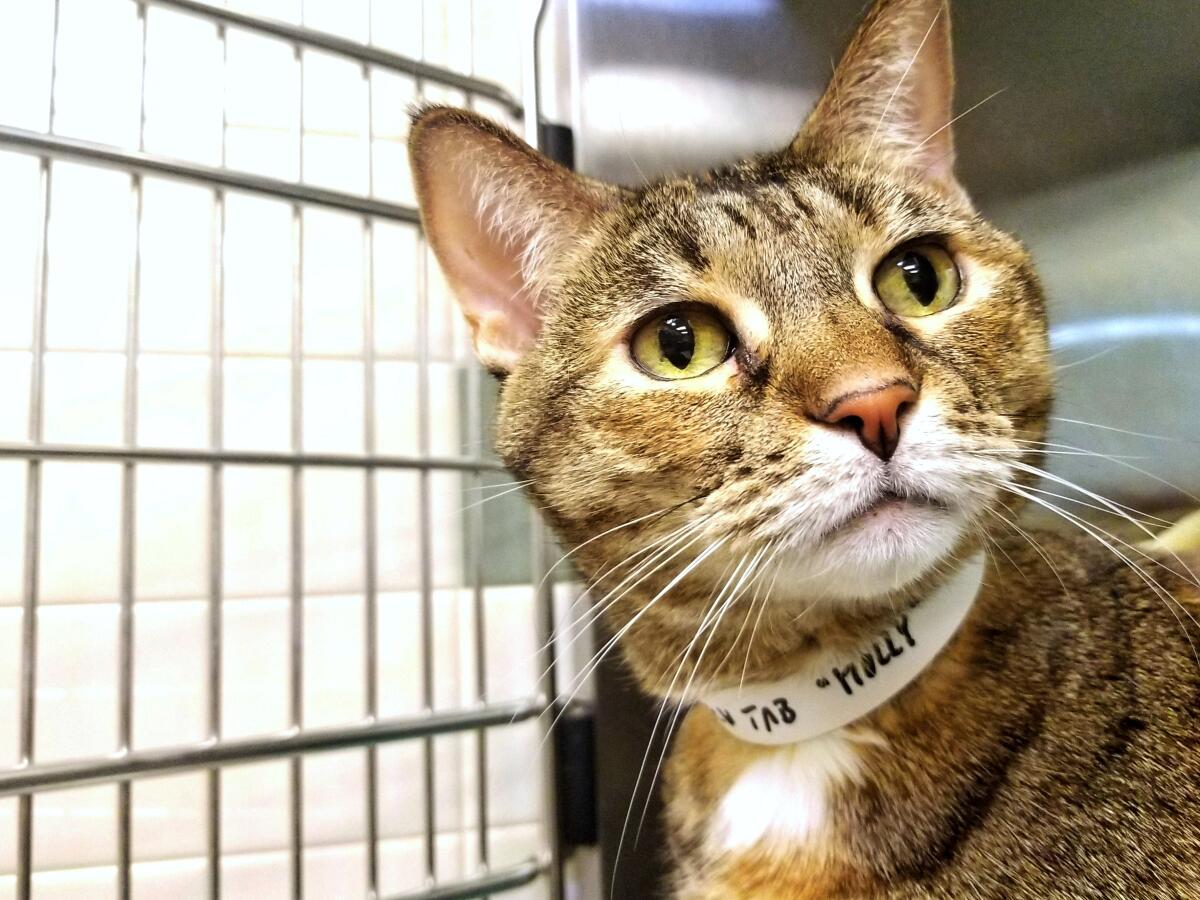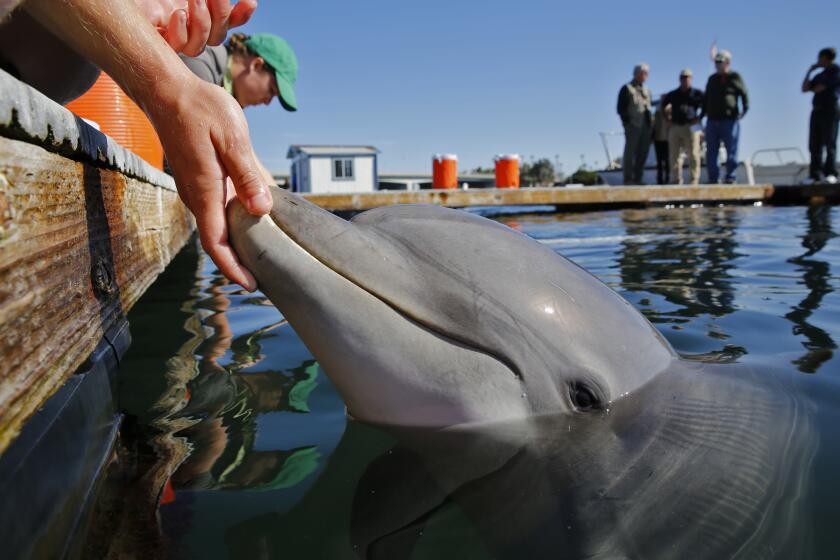Is your cat bad? The problem is likely not with Fluffy — it could be you

- Share via
When I started working with cats almost 25 years ago, it was purely out of self-interest. My own cat, Kittums, had recently passed away. I decided to volunteer at a local animal shelter to get more hands-on feline time: I was mourning and needed more cats in my life. There was plenty of instant gratification to be found at San Francisco’s Society for the Prevention of Cruelty to Animals — cuddling with purring cats and playing with frisky kittens. These individuals had no problems finding new homes.
But there was another population at the shelter, the cats who were not coping well with the transition to shelter life. The ones who had lost their homes and were now hiding and hissing and didn’t want to cuddle: the “behavior cats,” as they were called. When I learned about them, I realized my calling at the shelter was not to meet my own needs but to meet theirs.
A shocking amount of scientific research has been done on whether people and their pets should sleep together.
There was no instant gratification from these animals, but working with them ended up being the most rewarding part of the shelter experience. Their rehabilitation required a hefty amount of patience and time (not to mention gentle handling, treats and play). The good news is that we were consistently able to find them new homes where they could blossom.
But it’s not just finding a cat a home that matters — we must ensure that they stay in those homes. Cats often end up in shelters because of behavior: Fear, aggression or house soiling can be intolerable for humans. I became motivated to learn everything I could about cats so that I could help keep them out of the shelter: I decided to become a cat behavior consultant.
Lopez: Is my new dog, who loves the TV but not the leash, a healthy addition or a home wrecker?
The new dog is quirky, lovable and entertaining, but he hates being on a leash and chews everything in sight. Do pets really offer companionship and healthier aging?
Before long, I found myself in the living room of my first clients. They were an engaged couple who had recently blended families — Jennifer with her elderly cat, Simon, and John with his energetic puppy, Chip. To say it wasn’t going well was an understatement, as Simon was peeing on the couch and didn’t want anything to do with Chip.
As I chatted with them to get more information, I noticed that John was avoiding eye contact with me. He sat slouched with his arms crossed. A few minutes into our conversation, he stormed out of the room.
Because of the growth and further intensification of animal production, humans inflict more suffering on animals today than they did in 1975.
“He wants me to put Simon to sleep,” Jennifer whispered, tears welling up in her eyes. In fact, I felt a bit like crying myself. Was I in over my head? Should I just tell her to dump John?
After the moment of panic dissipated, I realized the stakes were high. I was able to help Jennifer identify changes to the environment she could make, including moving the litter boxes to places where Simon felt safe. Adding pet stairs would allow Simon access to high spots where he could get away from Chip. I referred her to a reputable dog trainer who could help Chip be a happy and polite puppy, and we came up with a plan to shower both pets with treats when they were together to help them build positive associations with each other.
We need a new approach to animal rights that centers on their freedom to act — not just protecting them from harm — to save them from injustice.
Since then, I’ve worked with hundreds of cat owners and seen it all: couples breaking up or sleeping in separate beds because of their cats; folks afraid to have guests over because their home smells like cat pee; sleep-deprived humans with a cat who keeps them up all night.
I realized that even though many of these people had lived with cats their whole lives, they often didn’t know much about the species. Cats have instincts to scratch, climb, hide, hunt and eliminate in a clean space. They can be territorial and wary of newcomers. These instincts can cause conflict when we don’t give our cats acceptable outlets, such as sturdy scratching posts, cat trees, hiding spots and clean litter boxes. And when we try to introduce them to another pet too quickly, the fur may literally fly.
When pet parents know what makes our cats happy, we know how to provide a healthy environment for them. Although our cats can’t directly tell us what’s bothering them, we can learn a lot by carefully observing them. From there, we can better interpret what a cat’s behavior is saying, and as a result, have a better relationship with the animal.
A few years after I met Jennifer and John, they came to the same San Francisco shelter where I began this work. They were happily married and were looking for a new cat to adopt. Simon had recently died of old age. Things had turned out so well with him and Chip that the couple felt prepared to introduce another cat into their home. It was a much better ending than I ever could have expected when I was sitting in their living room that first afternoon.
When I started on this path, my only goal was to help cats. That’s what gets me out of bed every morning and what gives my life meaning. It took me a little longer to realize how much this work actually helps humans too.
Mikel Maria Delgado is a scientist and writer based in Sacramento and the author of the forthcoming book “Play With Your Cat! The Essential Guide to Interactive Play for a Happier, Healthier Feline.”
More to Read
A cure for the common opinion
Get thought-provoking perspectives with our weekly newsletter.
You may occasionally receive promotional content from the Los Angeles Times.













